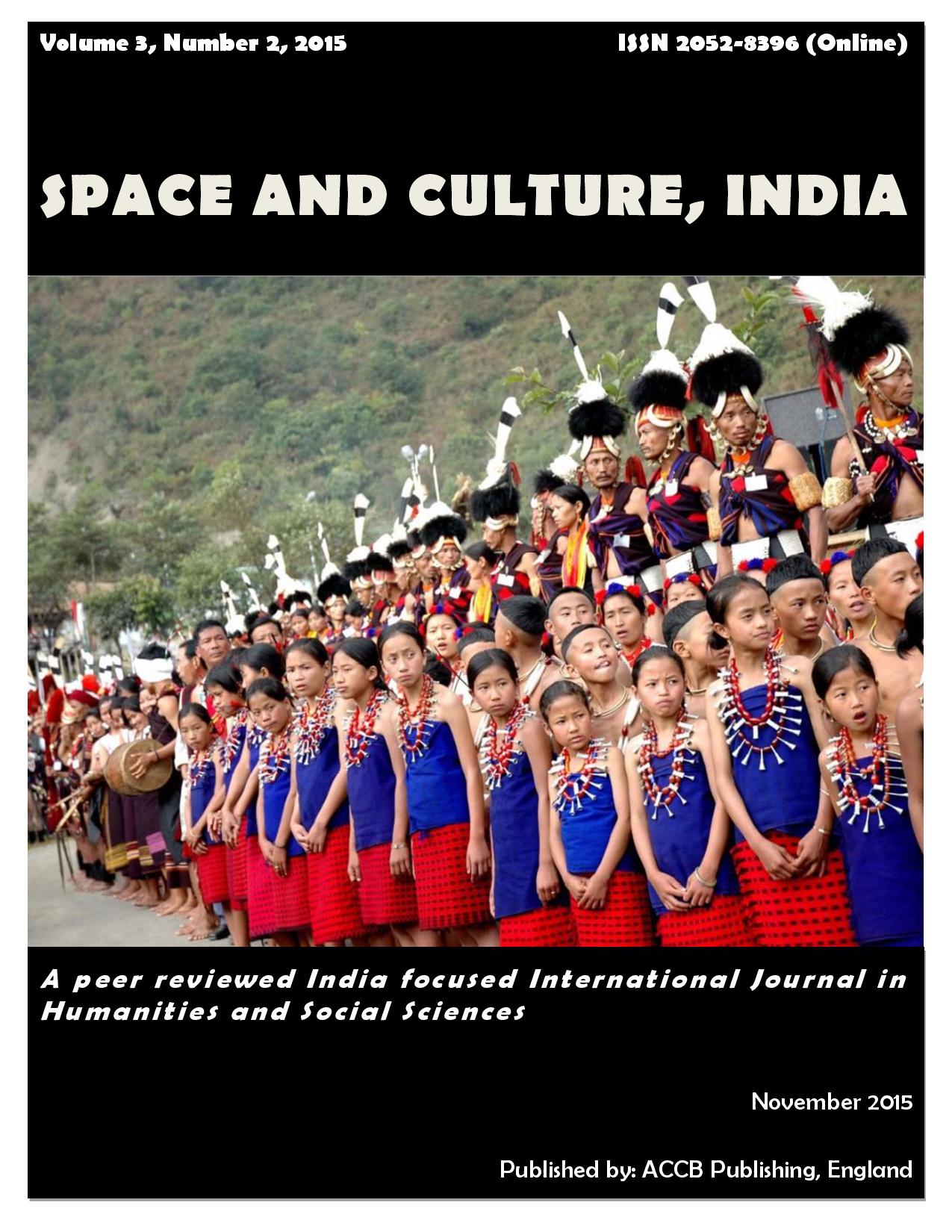The Zakhring Community of Arunachal Pradesh: Notes on a Lost Tribe

Abstract
This research deals with the Zakhring tribe, one of the least known tribes of the world. They are found in small numbers (less than 1000) in the remote and frontier areas of Arunachal Pradesh, geographically located in India's North East. This is a tribe, perceived to have migrated from Tibet and settled in the Walong and Kibito circle, Anjaw district of Arunachal Pradesh, whose numbers seems to be decreasing over time and, thereby, facing gradual disappearance. Drawing upon ethnographic research and interviews in the Walong and in the Kibito circle in Arunachal Pradesh and in Tibet, I attempt to describe this tribe.
Keywords
Zakhring, Meyor, Ethnographic Research, Interviews, Arunachal Pradesh, India
References
Allen, G.T. (1946). Tour Diary of Major G.T. Allen, Assistant Political Officer, Lohit Valley Sub Agency for the Month of March 1946, Private Papers, MSSEUR D1191/5, London: The British Library.
Aiyadurai, A. (2007). Hunting in a Biodiversity Hotspot: A Survey on Hunting Practices by Indigenous Communities in Arunachal Pradesh, North-East India. Report submitted to UK: Rufford Small Grants Foundation, Mysore: Nature Conservation Foundation.
Aiyadurai, A. (2011). Meyor: The Least Studied Frontier Tribe of Arunachal Pradesh, Eastern Anthropologist, 64 (4), 459-469.
Bailey, F. M. (1945). China-Tibet-Assam. A journey, 1911, London: Jonathan Cape.
Bailey, F. M (1957).No Passport to Tibet,London: Rupert Hart-Davis.
Barua, S. (1995).Zakhring.In: People of India: Arunachal Pradesh, Vol. XIV. Ed by K.S. Singh, Anthropological Survey of India, Calcutta: Seagull Books.
Bhattacharyya, R. (2014). Understanding the Spatialities of Sexual Assault against Indian Women in India, Journal Gender, Place and Culture, 22(9), 1340-1356 DOI: 10.1080/0966369X.2014.969684
Bhattacharyya, R. (2013). Are We Empowered? Stories of Young Indian Working Women, Saarbrücken, Germany: Lap Lambert Academic Publishing, ISBN: 978-3-659-20580-4
Bhattacharyya, R. (2009). Examining the Changing Status and Role of Middle Class Assamese Women: Lessons from the Lives of University Students, PhD thesis, UK: Newcastle University.
Bourdieu, P. (1984). Distinction: A Social Critique of the Judgement of Taste, Cambridge: Harvard University Press.
Cooper, T. T. (1873). The Mishmee Hills: An Account of a Journey Made in an Attempt to Penetrate Tibe from Assam to Open New Routes for Commerce, London: Henry S. King & Co.
Choudhury, S. D. (1978). LohitDistrict: Arunachal Pradesh District Gazeetters, Shillong: Information and Publications, Government of Arunachal Pradesh.
Driem, G. van (2007).Endangered Language of South Asia. In: Handbook of Endangered Languages. Ed. By Matthias Brezinger, Berlin: Mouton de Gruyter.
Dutta, S. and Tripathy, B. (2008). Buddhism in Arunachal Pradesh, New Delhi: Indus Publishing Company.
Ehrhard, Franz-Karl (1999). The Role of “Treasure Discoverers†and Their Writings in the Search for Himalayan Sacred Lands.†In spaces and powerful places in Tibetian Culture, ed. Toni Huber, Dharamsala: Library of Tibetan Works and Archives.
Grewal, D.S. (1997). Tribes of Arunachal Pradesh: Identity, Culture and Languages. New Delhi: South Asia Publication.
Hamilton, A. (1912). In Abor Jungles: An Account of Abor Expedition: The Mishimi Mission and the Miri Mission. London: Eveleigh Nash.
Heriot, L. (1979). The First Martyrs in Arunachal Pradesh: The Story of Frs. Krick and Bourry Foreign Missionaries of Paris, Bombay: Asian Trading Corporation.
Kaulback, R. (1934). The Assam Border of Tibet.The Geographical Journal, 83 (30): 177-189.
Kingdon-Ward, Jean (1952). My Hill So Strong, The Alden Press, London: Bound by A. W. Bain &Co. Ltd.
Lamb, Alastair (1966). The McMahon Line. A Study in the Relations between India, China and Tibet, 1904 to 1914. Volume II: Hardinge, McMahon and the Simla Conference. London: Routledge and Kegan Paul.
Landi, V. (2005).Meyor and their Language, Itanagar: District Research Officer, Department of Culture Affaire, Directorate of Research, GoAP.
Osik, N. N. (1999). Modern History of Arunachal Pradesh.Itanagar: Himalayan Publication.
Rose, L.E. and Fisher, M.W. (1965). The North-East Frontier Area of India, Berkeley: Indian Institute of International Studies, University of California.
Roger Blench and Mark Post (2011). Declassifying Arunachalese languages: Reconsidering the Evidence. Cambridge: Mark Post, Kay Williamson Educational Foundation.
Santiago Lazcano (1966). The Kingdom of sPobo, Ethno Historic Notes on the Ancient Tibetan Kingdom of Spo Bo and Its Influence on the Eastern Himalayas, Translated: from Spanish by Rita Granda, Spain: Revue d’EtudesTibétaines.
Swinson, A. (1971).Beyond the Frontiers: the Biography of Colonel F. M. Bailey Explorer and Special Agent, London: Hutchison.
Singh, K. S. (1995). People of India: Arunachal Pradesh. Anthropological Survey of India, Calcutta: Seagull Books.
Sarkar, J. (1996). Bridge-Communities in Cross Road: Some Observations from Arunachal Pradesh. In: Tribes of India: Ongoing Challenges. Ed. By R.S. Mann, pp. 395-402. N. Delhi: M. D. Publications.
Williamson, N. (1909). The Lohit- Brahmaputra between Assam and South-Eastern Tibet, November 1907, to January 1908. The Geographical Journal, 30 (4): 363-383.
Williams, J. H. F. (1944). Tour Diary of J. H. F. Williams, Esq., I.P., Political Officer, Sadiya Frontier Tract for the Months of September, October and Part of November 1944.MSS EUR D1191/1. , London: The British Library.